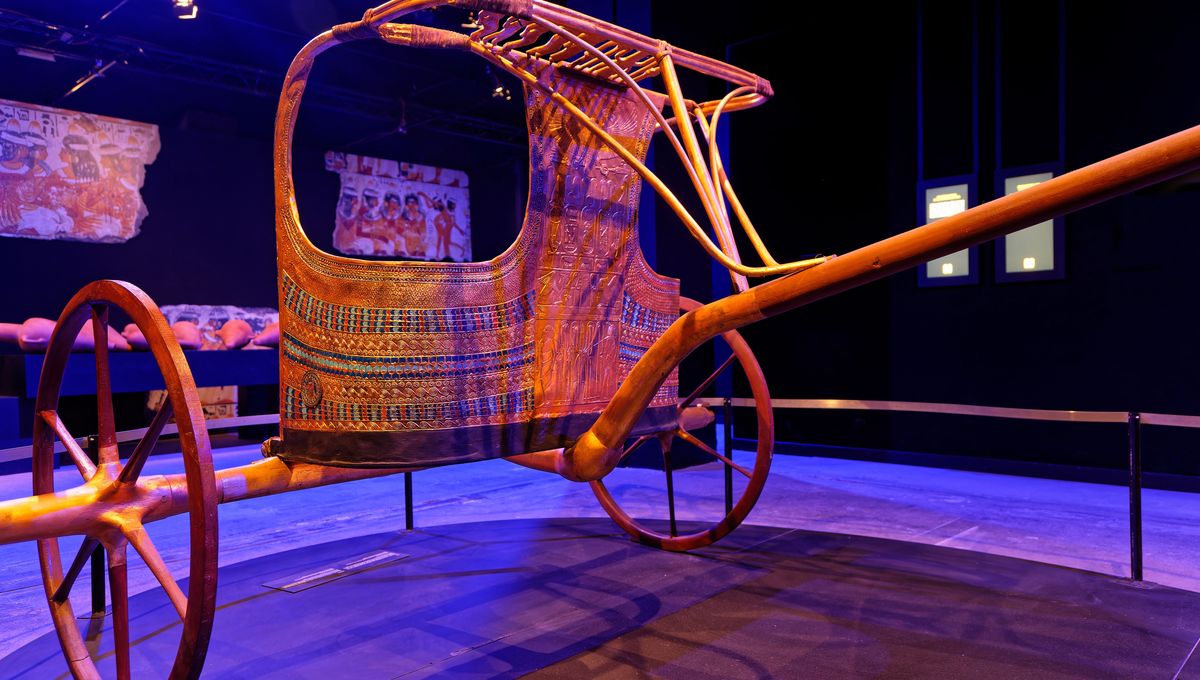
The cause of Tutankhamun’s untimely death in his late teens remains one of the great archaeological mysteries, although there is evidence to suggest that the Boy King may have met his end after falling from his chariot. Speculating that the ancient Pharaoh could hold the distinction of being Africa’s first traffic fatality, the authors of a new study have compiled all the data supporting this unproven theory, concluding that the accident may have been gnarly enough to leave young Tut with mangled internal organs.
From the moment that Tutankhamun’s mummy was discovered a century ago, it was clear to archaeologists that the young ruler had been hastily buried in a tomb that was too large for him and therefore probably meant for someone else. This oddity immediately alerted researchers to the idea that the sovereign’s death had occurred suddenly and unexpectedly.
X-rays taken in 1968 supported this theory by highlighting loose bone fragments in the skull, although the leading interpretation at the time was that the young king had been bludgeoned to death by his enemies. Bizarrely, the boy’s penis somehow went missing during this examination, later turning up on a sand-tray concealed beneath the body.
Anyway, subsequent studies poured water on the political violence hypothesis by revealing that the skull was in fact intact, meaning the loose fragments were probably just parts of the spine that had become dislodged during the embalming process. However, these analyses did show that the body was missing a massive part of the chest wall and several ribs, while Tutankhamun’s heart and lungs were inexplicably not included in the canopic jars buried alongside the mummy.
This led to speculation that his organs may have been discarded after being crushed as a result of a major chest trauma. Then, in 2005, CT scans revealed a fracture of the left distal femur just above the knee.
“Embalming resin within the fracture indicated that this was a fresh, compound fracture and must have occurred shortly before his death as there were no signs of bone healing,” explain the study authors. “Even as recently as one century ago, compound fractures had a very high mortality due to infection and other complications. Therefore 3,500 years ago, with no access to antibiotics, death from a compound fracture would have been very likely,” they write.
Speculating as to how the youngster may have picked up this life-threatening injury, the researchers note that Tutankhamun’s tomb contained several chariots with well-worn wheels, as well as depictions of the Boy King riding in such a vehicle. The fact that he is known to have had a club foot also contributes to the idea that Tut may have relied on chariots to get around.
Regarding the wound itself, the authors say that “the type of fracture Tutankhamun suffered, a compound distal juxta-epiphysial femur fracture, is excessively rare in children. Open fractures are typically caused by high-energy injuries, such as car crashes, falls from a height or severe sports injuries.”
“We propose that pharaoh Tutankhamun fell from his chariot as a result of his weak left foot,” they write. “During the fall he sustained multiple injuries including blunt chest trauma and a compound femur fracture.”
While the circumstances surrounding this potential chariot crash are unclear, it’s worth noting that Tutankhamun’s tomb was loaded with booze. Not that we should jump to conclusions about this, but he certainly wouldn’t be the first teenager to have caused an accident after getting behind the wheel with alcohol in his system.
Actually, we guess he would.
The study is published in the South African Journal of Surgery.
Source Link: Boy King, Boy Racer? Tutankhamun May Have Been Africa’s First Traffic Fatality